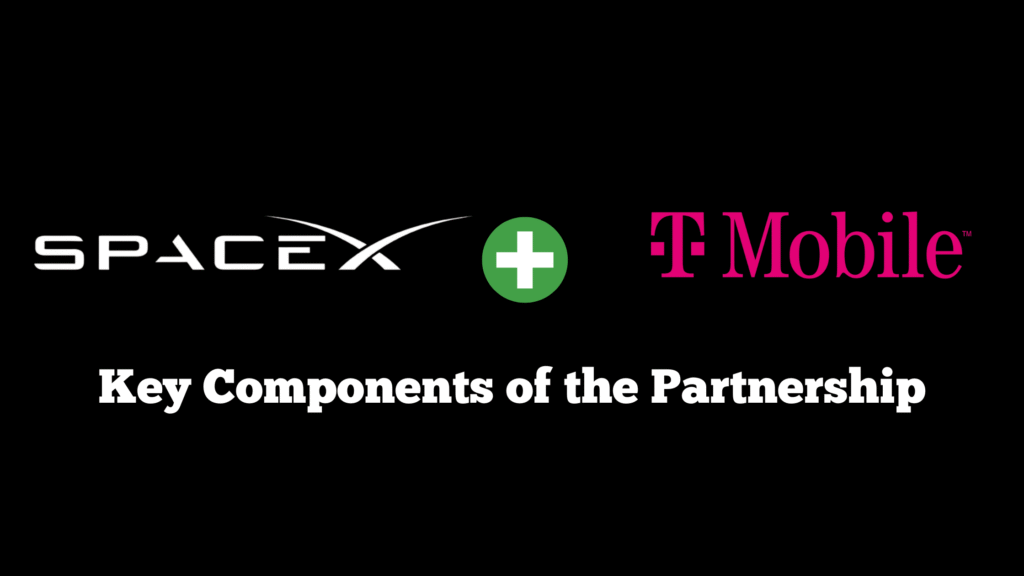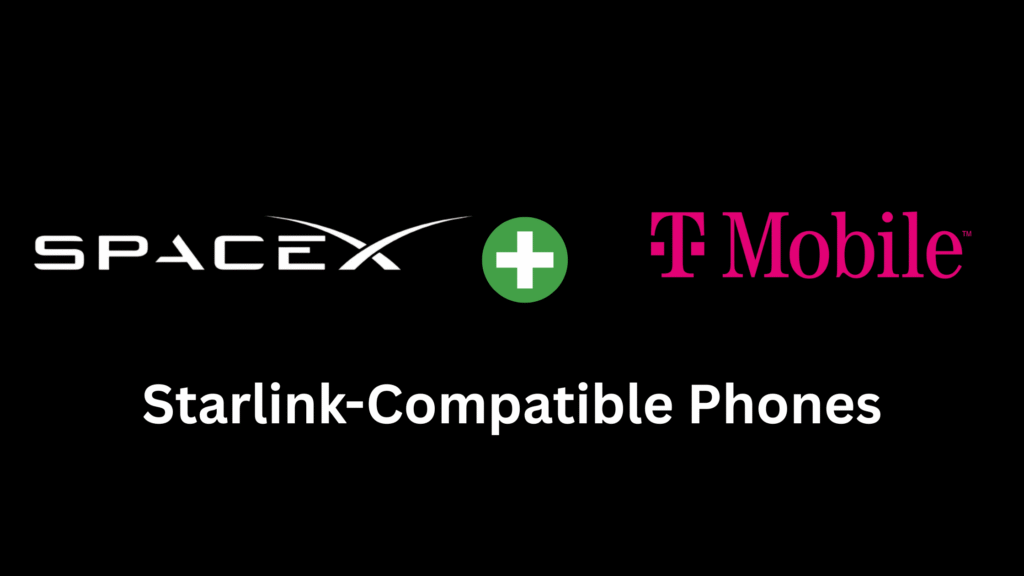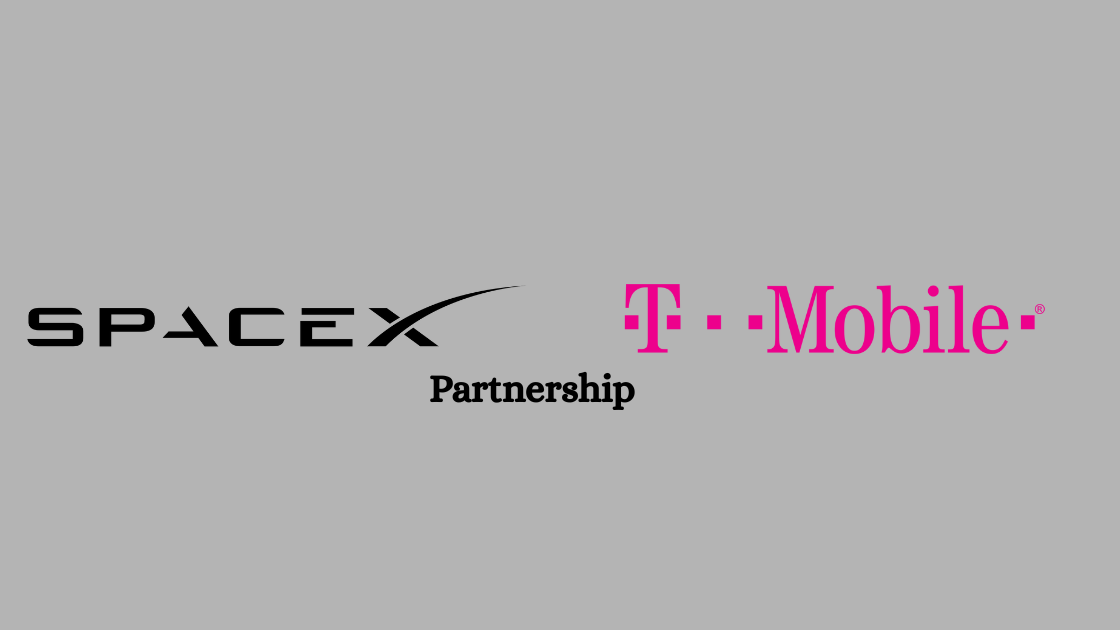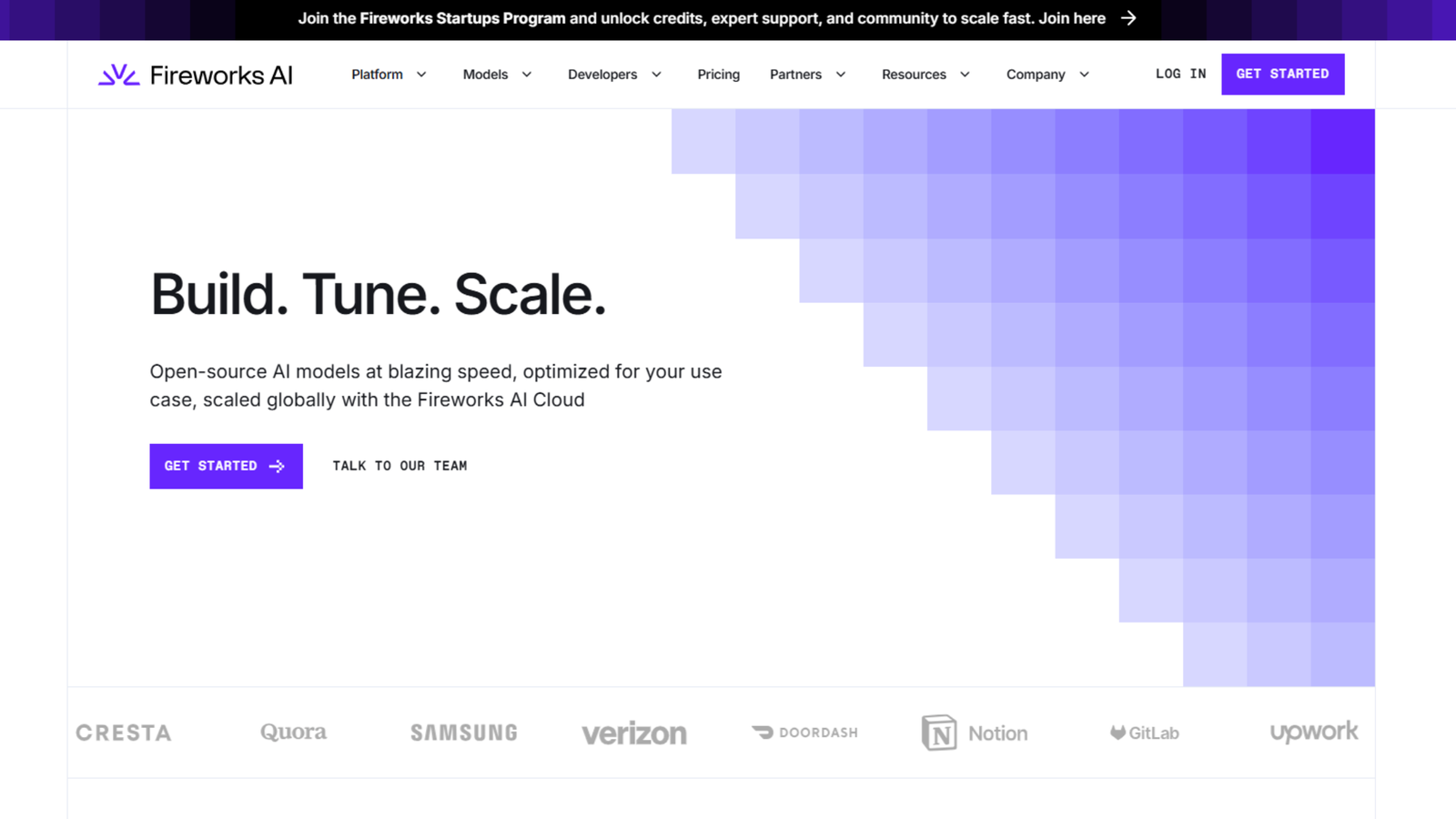SpaceX is critically recognized due to launching rockets and developing a large network of low earth orbit satellites named Starlink. Starlink intends on offering space based internet to places which are difficult to reach, or whose vision does not have great internet coverage. T-Mobile is an American telephone company among the largest that has mobile phone networks and 5G coverage.
This cooperation is significant since they two offer the characteristics on which they are best: SpaceX offers satellite infrastructure and T-Mobile offers mobile network infrastructure. They have the capability of accessing areas where neither the cell towers nor the satellites are sufficiently effective on their own. This partnership could revolutionise how we all keep connected with one another with 5G and satellite-based internet becoming increasingly important over time – particularly in locations with confidence issues, when the internet derails, or the development of cell tower infrastructure is challenging or costly.
The Beginning of the Partnership
In 2022, SpaceX and T-Mobile stated their collaboration to construct some sort of coverage dubbed as Have Above and Beyond. It was meant to employ Starlink satellites which can communicate directly to cell phones (modified phones) with the T-Mobile spectrum so that cell service can be offered even in locations where cell towers are not reachable.
Some of their initial objectives were:
- Eradicating the so-called dead zones dead areas with little or no cell signal (deepest places in the valleys, the forest in the middle of the desert, and on the sea, etc.).
- Providing basic texting, MMS, messaging apps even marking Cell coverage. Voice and data were to be introduced afterwards.
- This has to be done in a manner that is compatible with phones that people already have and thus do not require special gadgets.
Both have strengths as far as technology is concerned:
- SpaceX is already deployed into low Earth orbit with its satellites and they are developing (are, and actually launching) satellites with direct-to-cell capability. That is to say that the satellites can become more like the mobile cell towers in the sky.
- T-Mobile has licensed spectrum (radio frequencies) and the ground infrastructure along with mobile networks knowledge. They shall supply spectrum on which the satellites can send to ordinary phones.
Regulators had to sanction some of this, as well. As an illustration, the U.S. Federal Communications Commission (FCC) issued a license that permits T-Mobile and SpaceX to utilize some frequencies as supplemental coverage in space in November of 2024. This was necessary in making the satellite-to-phone service a legal and workable one.
Key Components of the Partnership

To learn to what extent this partnership works, the following are the key elements of this partnership and their interpretation.
Starlink’s Role in Connectivity
- SpaceX has a satellite internet, which is called Starlink. This is because its satellites orbit the earth at a very low earth orbit (LEO), which provides it with a lower latency (delay) than geostationary satellites that are several kilometers above the earth. This assists in making the internet, communication more responsive.
- For this collaboration, part (or all) of the Starlink satellites are to be constructed (or constructed) that are able to work on the direct-to-cell (or direct-to-phone). This translates to the satellite having an ability to communicate directly with unorganized mobile phones via the T-Mobile spectrum wherein no cell tower is within the spectrum.
T-Mobile’s Mobile Infrastructure
- T-Mobile already has its own 5G network, which it uses through the use of their cell towers and conventional systems. The U.S. is largely covered in their network but there are still plenty of dead zones where the service is either weak or unavailable.
- The action of T-Mobile is that it is combining the capacity of the satellites of Starlink with its own spectrum (more than mid-band spectrum) and the network planning. This gives Starlink satellites the capacity to cover the areas that lack coverage by T-Mobile.
Together, the companies make a proposal to roll out in stages:
- First, in the satellite mode, texting, MMS, and messaging applications as well as any other uses that are low bandwidth will be available when cell coverage is not available.
- Much stricter services will come later with voice calls, internet bandwidth, and perhaps even IoT (Internet of Things) applications.
Impact on Connectivity in Remote Areas
Improved connectivity in remote underserviced (difficult to reach) locations is one of the largest promised advantages of this partnership. These are the ways that can be assisted by it, and the hurdles it tackles.
How it helps remote and underserved areas
- Countless places on the earth, mountains, deserts, even rural areas are regulated by cell towers, as installing them and maintenance will be either costly, challenging, or dangerous. There are also issues in terrain, low population density, regulatory or land-use restrictions, etc.
- Satellite networks do not rely on the ground infrastructure everywhere. One of these satellites is capable of viewing wide swaths of the earth, hence, as long as the skies are clear of too many obstructions and you can see up in the sky, you can be connected even without the presence of the cell towers. It implies that individuals hiking, people living in remote villages, maritime people, etc., can have rudimentary connectivity.
- The service target includes dead zones in the U.S. i.e. over half a million square miles that are deficient in cell towers. Those comprise Alaska, Puerto Rico, territorial waters, and other isolated land.
- Emergency use: In emergency events or disasters where the cell infrastructure has fallen (storms, flooding, and wildfires) there is a possibility that the satellites can still work, allowing text and even 911 calls to occur. In case of a storm (e.g. Hurricanes Helene, Milton) regulators permitted direct-to-cell operations of some type to help in that situation.
Challenges overcome compared to traditional infrastructure
Cost
The cost of constructing cell towers in isolated locations is high, particularly those backed by backhaul (linkage between the tower and the core network). To some extent, satellites can save or even remove that price.
Time & terrain
The development of towers in rough areas can require years, building permits and giant efforts in logistics. Satellites are more easy to launch and embrace a lot of coverage.
Reachability
There are simply too distant or too thinly populated locations to warrant investment of a large scale by other traditional telecom service providers. The coverage by satellites makes such places even more suitable to serve.
But there are limits and challenges
Signal obstruction
Trees, heavy clouds, buildings or terrain (e.g. deep valleys) also may cause signals to be blocked. You usually require relatively bright visibility of the sky in order to work efficiently.
Latency and data rates
Messages and texts are less demanding, whereas voice and data (high bandwidth in particular) require more of the system. Taking into consideration that the initial stages are dedicated to messaging, it portrays the existing constraints. With the need to launch additional satellites to the sky and the ability to allocate more spectrum bandwidth, the data rate could become better.
Advancements in 5G Connectivity
Remote coverage is just one of the advantages, and despite the broader needs, the partnership connects to the expansive 5G and next-generation mobile networks trends. It does not only pertain to being enforced on-grid connectivity – it can also be beneficial even to the suburbs and urban environment.
Complementing 5G rollout
One thing is redundancy
Satellite connectivity may also be used to provide a backup where the cell network is flaky (such as in between trees, or in basements, or areas with many obstructions). The implication is that your phone would still relay significant messages in case the local cell tower is not functioning correctly or is obstructed.
Another is capacity expansion
Cell networks are becoming overloaded as more devices need increased data by accessing streaming video, VR/AR and IoT sensors. Systems assisted by satellite would be of use to relieve some of the traffic, or give a back route on congestions.
- Another concept is the so-called direct-to-cell as it implies that satellite systems do not exist independently in terms of mobile networks. This integration could substitute more easily switching between cell mode and satellite mode.
Potential benefits for urban/suburban users
Better reliability
The dead spots (depicted by loss of service) in specific locations e.g. basements, tunnels, indoor areas to have heavy walls, may be alleviated with time in case satellite links are faced with greater robustness.
Emergency readiness
In areas where people are very many in case there is a calamity that breaks down the cell towers, the satellite backup may sustain vital services.
Innovation for apps
App developers can create the services that presume the coverage of all-time functionality as this satellite connectivity gets increasingly competent (voice, data, IoT). In case of example location tracking, weather tips, safety warnings may become more common relying on this all-place coverage.
Potential Market Disruption
It is not a mere fancy experiment as seen in the joint work of SpaceX and T-Mobile. It may disrupt the telephone and satellite business in various dimensions.
Challenging existing players
- Economic pressure might be placed on the traditional telecom providers and traditional mobile network operators who achieve their profitability through the use of terrestrial towers only. When cell coverage via satellites becomes commonplace, then the customers expect to have no dead zones. The inability of the companies to do the same can make them lose their customers or invest more on closing the distance.
- Even the satellite operators can experience competition. Several are developing various technologies of satellite internet or departure-to-object : (ex: AST SpaceMobile, Lynk, other). This alliance provides SpaceX / Starlink + T-Mobile with a great advantage regarding regulatory approval, infrastructure, and customer access.
- Spectrum competition: This requires spectrum (radio frequencies) to be shared between terrestrial and spaceborne transmissions in order to do this successfully. The obtaining of those licenses, regulatory approvals, and the arrangement of the interference question will gain significance and degrees of contention. In September 2025 indeed, SpaceX cer-teally purchased spectrum, formerly occupied by EchoStar (AWS-4, H-block) to serve its satellite direct-to-device services.
Economic implications
For customers
Possibly reduced costs of coverage in isolated locations; reduction of requirements in special satellite phone use; improved dependability that would probably cut down costs caused by failure or outages in web-connectivity.
For telecom business models
The subscription plans can be changed to accommodate satellite backup or hybrid plans. An example is T-Mobile which started to provide service T-Satellite (utilizing Starlink) as individual technology to some of its higher-priced plans.
Regulatory and policy shifts
The governments and regulators will have to formulate regulations regarding such aspects as spectrum usage, safety, emergency services, interference, data privacy. One such example is the course of action that the U.S. FCC pursued (issuing licenses, spelling out a new designation of the supportive coverage by space). There will be other countries and regions that will follow.
Technology development
This boundary pushing will hasten the advancement in satellite design (larger, more efficient antennas, routing efficiency, and latency reduction), mobile chipsets (phones will have to use appropriate bands), and apps/software to switch from cell to satellite/vice versa.
The collaboration that SpaceX is having with T-Mobile can be a giant leap in terms of how we will remain connected in the future. Their solution is to use a satellite network with Starlink and a cell network, coupled with spectrum, T-Mobile to its “direct-to-cell” service to address coverage holes when cell towers are inaccessible.
In far/away or inaccessible terrain, this may imply dependable messaging, emergency calls and later complete voice /data service even without conventional infrastructure. However, in the urban environment, this could result in improved backup in support, increased certainty, and increased demands on top of the users.
With 5G proliferating, user demands increase, satellite infrastructure gets better, this form of hybrid connectivity (cell + satellite) will probably gain a lot of use. The collaboration could become a pivot, and the technology sector could move to the place where “no matter where you are, phone works become a viable objective.
The New Generation Devices: Starlink-Compatible Phones

SpaceX’s Starlink partnership with T-Mobile’s creates a groundbreaking shift in mobile communication. Promising to eliminate the main problem in connectivity, that is network dead zones. The concept of Starlink-compatible phones revolves around integrating satellite communication directly into standard mobile devices. Users are capable to make calls, send texts, and access data services even in areas without traditional cellular coverage. The conventional satellite phones require bulky hardware or separate devices, but Starlink-enabled smartphones will use existing mobile frequencies and connect directly to Starlink’s low Earth orbit (LEO) satellites.
It bridges the gap between terrestrial networks and space-based internet. In future the implications for mobile device operation are transformative. Nowadays, mobile networks is totally ground-based towers with limited reach, especially in rural and remote corners in the world. So Starlink-compatible phones bypass this limitation, even it offers secure global coverage without any additional infrastructure. Users easily can stay connected in disaster zones, deserts, forests, or even while traveling internationally. They don’t need to rely on roaming agreements or patchy coverage maps.
This new technology also opens up new techniques in critical and remote scenarios. Even in natural disasters like earthquakes, hurricanes when traditional networks often shut down, Starlink-Compatible Phones provides life-saving communication. It can also boost up the global businesses.
The widespread rollout of Starlink-compatible phones will show how mobile networks are smartly designed and marketed. However, the focus will completely shift toward space-integrated connectivity and reliability. When manufacturers adopt satellite-compatible chipsets, consumers could see the upgradee smartphones which is capable of staying online anywhere on Earth.
However, Starlink-compatible phones upgrade mobile technology into next level. By this process smartphones are transforming from region-bound communication tools into truly global devices. This process helps to connect humanity across even the most remote places of the world.
Challenges and Concerns of Starlink-Compatible Phones
While Starlink-compatible phones promise to create a revolution for global connectivity, but the road is not so smooth it involves complex technical engineering, international coordination, and rigorous attention to data security. It shows many complication that could slow its implementation.
Different Technical Challenges
The most important challenge that lies in integrating satellite and terrestrial mobile networks. Actually traditional smartphones always used for communicating with nearby cell towers, not satellites orbiting hundreds of kilometers above Earth. Users need to connect with direct satellite connections and need specialized antennas, power management systems, and network chips capable of handling higher latency and signal delays. Especially in urban and mountainous corners to maintain stable connections users can move between ground-based and satellite coverage. Users require advanced technology and network optimization.
Policy and Regulatory Barriers
Global satellite-based communication which needs extensive regulatory approval. Spectrum allocation determines which frequencies satellites can use, and control by national and international authorities. T-Mobile and SpaceX must coordinate with governments worldwide to avoid such interference with existing telecom services. It is very much obvious that every country has different laws regarding foreign-operated satellite networks. These regulatory processes are very lengthy, politically complex and potentially delaying worldwide rollout.
Security and Privacy Concerns
Satellite-based mobile communication that is Starlink-Compatible Phones introduces new sides of privacy and cybersecurity risks. Data must travel through various systems. Governments may aware about this and raise surveillance concerns. Overcoming these challenges will definitely determine the path where next generation of mobile technology can smoothly transform communication worldwide.
What This Means for the Future of Connectivity?
The long term partnership of T-Mobile and Starlink is create a revolutionary in the global communication industry. When satellite technology merge with traditional mobile infrastructure, it can redefine global communication networks. Future mobile systems may use hybrid models, instead of relying solely on ground-based towers. Satellites fill the coverage gaps—ensuring universal access to voice, text, and data.
SpaceX’s Starlink brings the power of a vast, low-Earth orbit satellite network, capable of delivering high-speed internet to virtually any corner of the planet. T-Mobile offers its established terrestrial network, mobile expertise, and user base. Both SpaceX’s Starlink and T-Mobile will make a new chapter for the world where connectivity is not limited by geography. When you’re deep in a forest, sailing at sea, or traveling through remote rural areas – you are always connected with the network.
The impact of this collaboration far beyond personal communication. Students can access online learning without any hurdles and interruption in remote regions. The partnership also helps many students in their studies. Even it is helpful for patients who live in isolated or remote areas. Cloud gaming, streaming and entertainment are also universally accessible for every person. Various industries such as agriculture, logistics, and emergency response could benefit from real-time connectivity powered by this hybrid network. However the partnership indicates a new revolution of the internet. The bold step toward a world where everyone, everywhere, can stay connected to the digital age.
Conclusion
T-Mobile and SpaceX’s Starlink make a great combination that offers a groundbreaking step toward bridging the world’s digital divide. To combine with T-Mobile’s vast terrestrial network, Starlink grows constellation of low-Earth orbit satellites. This collaboration of T-Mobile and SpaceX’s Starlink remove mobile dead zones and make true global connectivity. The collaboration identifies not just an upgrade in mobile coverage, but also create a redefinition of what it means to be connected—anytime and anywhere.
To reshape the future of global communication by spreading reliable mobile service to regions which is previously out of reach for traditional cell towers such as remote villages, mountains, oceans, and disaster-stricken zones. The new technology of communication opens new doors for entirely new use cases. When emergency responders gaining signal and even global travelers always are staying connected across borders. The most important thing is remote businesses operating with uninterrupted access to the digital world.
This technological revolution, global communication success will depend on overcoming regulatory, technical, and security challenges. When these hurdles are addressed effectively, Starlink-compatible phones could usher in a new era. The partnership between T-Mobile and SpaceX eliminate all type of hurdles and create progress in the global communication industry. The advanced technology could directly impact the way we communicate, work, and live in the coming years. For future development the collaboration is very important. Mobile connectivity enters into a new chapter and it promises to future generation where no one, anywhere on Earth, is left without a signal.







